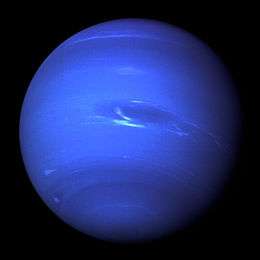Argo (spacecraft)
| Mission type | Reconnaissance |
|---|---|
| Operator | NASA |
| Spacecraft properties | |
| Power | RTG (proposed) |
| Start of mission | |
| Launch date | Launch window: 2015 to 2020 |
| Flyby of Neptune, Triton, and one KBO | |
| Closest approach |
Neptune: 8-11 years after launch.[1] KBO: an additional 3-5 years[1] |

Argo was a 2009 spacecraft mission concept by NASA to the outer planets and beyond.[1][2][3] The concept includes flybys of Jupiter, Saturn, Neptune, and a Kuiper belt object.[1] A focus on Neptune and its largest moon Triton would help answer some of the questions generated by Voyager 2's flyby in 1989,[1] and would provide clues to ice giant formation and evolution.[2]
The Argo mission was meant to compete for the New Frontiers mission 4 (~$650M). One of the reasons Argo was not formally proposed, was the shortage of 238Plutonium for the required radioisotope thermoelectric generator (RTG) for electric power.[4] The current launch window for this mission was particularly favorable. It opened in 2015 and lasts through the end of 2019, so future missions would need to be redesigned for the relevant planetary alignments.[4]
See also
- New Horizons probe, performed a Pluto flyby in 2015
References
- 1 2 3 4 5 Hansen, C. J.; et al. (27 August 2009). "Neptune Science with Argo – A Voyage through the Outer Solar System" (PDF). Jet Propulsion Laboratory. Retrieved 2016-11-07.
A launch opportunity to the outer Solar System via Neptune opens in 2015 and lasts through the end of 2019, with backup options in 2020. It allows trajectories with reasonably short trip times to Neptune (8-11 years) and the Kuiper Belt (an additional 3-5 years), as well as low Triton approach speeds <17 km/sec.
- 1 2 "Argo: Exploring the Neptune System and Beyond" (PDF). EPSC Abstracts. European Planetary Science Congress. 2009. Retrieved 2016-11-07.
- ↑ White Paper: Argo Mission to Neptune, Triton, and a KBO. Future Planetary Exploration, 30 August 2009.
- 1 2 Betz, Eric (24 August 2015). "NASA's next big spacecraft mission could visit an ice giant". Astronomy Magazine. Retrieved 2016-11-07.

